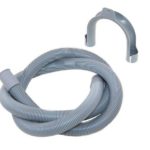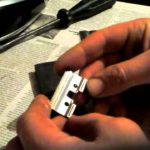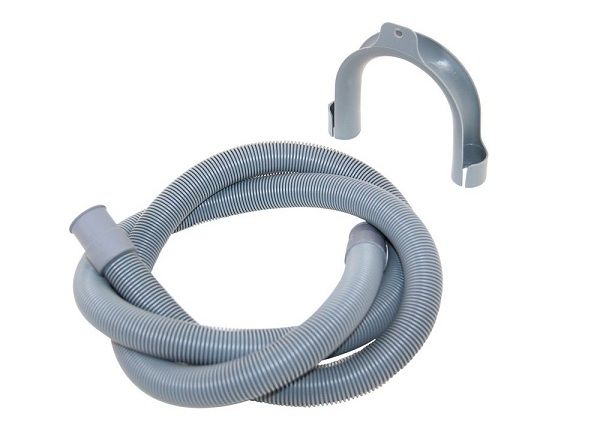How to transport washing machines
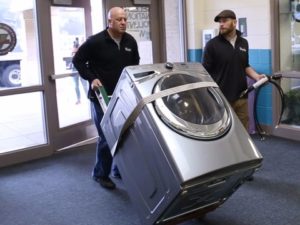 Household appliances require special handling during transportation. The presence of small moving parts requires careful consideration of the movements of such objects. This is especially true for washing machines. Inside there are movable drum and tank, which can be damaged if not secured.
Household appliances require special handling during transportation. The presence of small moving parts requires careful consideration of the movements of such objects. This is especially true for washing machines. Inside there are movable drum and tank, which can be damaged if not secured.
The content of the article
The need to secure the insides of the machine
The basic configuration of the washing machine from the store contains special shipping bolts designed to secure the parts. If the equipment has already been used and there is a need to transport it to a new installation location, these bolts may be lost, and you have to resort to improvised means. It could be:
- Textile;
- Foam rubber;
- Styrofoam.
 These products must be placed inside the machine after disassembling it - removing the top cover. To do this, you need to unscrew the bolts, then put soft materials inside, make sure that the drum and tank are secured, and put the cover in place.
These products must be placed inside the machine after disassembling it - removing the top cover. To do this, you need to unscrew the bolts, then put soft materials inside, make sure that the drum and tank are secured, and put the cover in place.
After this, you should also handle the equipment carefully. Fixing internal moving elements does not mean that the outer covering is invulnerable. It should also be wrapped in fabric, corrugated cardboard or film.
The machine can be transported only in a vertical position. If it is placed in a cardboard box that is not the right size and there is space left inside, it must also be filled with soft materials.
Transportation rules
 When transporting this equipment by truck, the machine must be placed sideways in the direction of travel.
When transporting this equipment by truck, the machine must be placed sideways in the direction of travel.
If it is adjacent to other objects in the car body, it is necessary to place it closely or fill the empty space between things. Moving the machine along the body while driving can lead to damage to the outer casing, pipes, contacts or adjacent things.
Attention! The corners of washing machines are quite sharp. To avoid damage to other equipment or furniture during transportation, it is recommended to visually calculate possible contacts and isolate the corners with a soft cloth and tape.
Before moving the machine into the car, you must do the following:
- Secure the drain hose with tape or adhesive tape to the back wall of the machine;
- Make sure the door is securely closed. Despite the presence of a locking mechanism, it is better to additionally seal it with tape or wrap it with rope;
- Check that there is no powder or conditioner in the compartment.
Difficulties in carrying equipment may arise if you move the machine from the upper floors of a building without an elevator. Professionals and store technicians have special equipment and skill in this difficult task. But you can successfully move the washing machine from any floor yourself.
Features of manual carrying
 Despite the seemingly compact dimensions and voids inside the machine, it is quite heavy in weight.In order to move it correctly and without damage, it is necessary to begin the task together. Three people are unnecessary for this purpose, and one person cannot carry the object (with the exception of heavyweight athletes).
Despite the seemingly compact dimensions and voids inside the machine, it is quite heavy in weight.In order to move it correctly and without damage, it is necessary to begin the task together. Three people are unnecessary for this purpose, and one person cannot carry the object (with the exception of heavyweight athletes).
The washing machine can only be carried vertically or with a slight tilt (no more than 30 degrees). To do this, one person takes it from behind by the bottom, and another from the front. It is more convenient if it is in front - the carrier will capture the equipment not behind his back, but directly in front of him. This increases the chances of transfer without damage. The only inconvenience is that you have to go down the stairs backwards.
It is also not recommended to drag the washing machine. In addition to the obvious possibility of severely damaging the floor surface, you can accidentally chip or wrinkle the edge of the machine. The washing machine has a fairly streamlined shape, without additional handles or stop devices, so before any movement it has to be slightly tilted. Before doing this, it is better to enlist the help of another person on the side where you are tilting the equipment.
Loading into the car
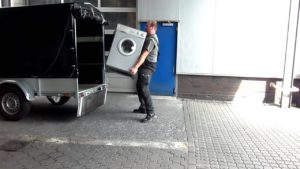 If freight transport is offered, there will be no problems with loading. Any washing machine will fit “standing up” into any gazelle or KAMAZ. But with a passenger car you will have to work hard. There are three options for transporting a passenger car: on the back wall, on the side or standing.
If freight transport is offered, there will be no problems with loading. Any washing machine will fit “standing up” into any gazelle or KAMAZ. But with a passenger car you will have to work hard. There are three options for transporting a passenger car: on the back wall, on the side or standing.
The third option will not cause any inconvenience if the machine can accommodate equipment. When transporting on its side, many do not secure the internal drum and tank, but extra precautions will not hurt. Particular care should be taken when checking the internal contents of the machine during such types of transportation as on its side or on the back wall.If water or powder remains in the tank, this can lead to damage to the electronics, including complete destruction of the mechanisms.
The most capricious brand of car for transportation is Zanussi. A drain valve located near the counterweight prevents it from tilting or lying down. If the machine is placed like this, the valve breaks.
Signs of damage due to improper transportation
After transporting this equipment, it is recommended to immediately turn it on and check for damage. If the place where it will stand is not yet ready, just connect the water supply hose and simply hang the drain hose into the bathtub or sink.
The most common damage after transportation
- Damage to the body. It could be a simple scratch or chip. Such damage is found not only during independent transportation. The appearance should be carefully checked when delivering a new machine from the store;
- Drain pump failure. May become detached, torn, or detached from the housing;
- Damage to the powder and conditioner compartment. Occurs due to its falling out without proper fastening;
- Failure of the control panel;
- Water ingress and failure of electronics;
- Shock absorber failure;
- Broken power cable.
 Any damage can be repaired, except for a broken case or complete failure of the electronics. You can connect the washing machine only after completely unpacking and removing the packaging material from the inside. If the drum is still secured with bolts, they must be removed.
Any damage can be repaired, except for a broken case or complete failure of the electronics. You can connect the washing machine only after completely unpacking and removing the packaging material from the inside. If the drum is still secured with bolts, they must be removed.
It is possible to reuse the bolts, so it is better to put them in a safe place or, if space allows, secure them in a plastic bag directly on the back of the machine body.Before installing the machine in its permanent location, you need to make sure the floor is level.
The machine is strictly contraindicated to operate on an uneven floor. Its movements during washing, especially when spinning at high speeds, can cause the device to move along the floor, leading to disconnection of hoses and “accidents” with the machine leaking.
Tips for preparing for transportation
Before packing the machine or unscrewing its lids, you need to make sure the inside of the device is dry. To do this, you need to remove the powder compartment, rinse it and dry it. To drain liquid from the inlet or drain hose, you can tilt the machine and lower the end of the hoses into a basin or bathtub. You cannot disconnect the hoses from the machine - they form a single composition.
When the machine has just been brought from the store, it is recommended not to throw away not only the box from it (in order to guarantee the product), but also the foam in which it was packaged for at least the first year. This will guarantee a safe move for the device, and will reduce your problems with packing the washing machine.


